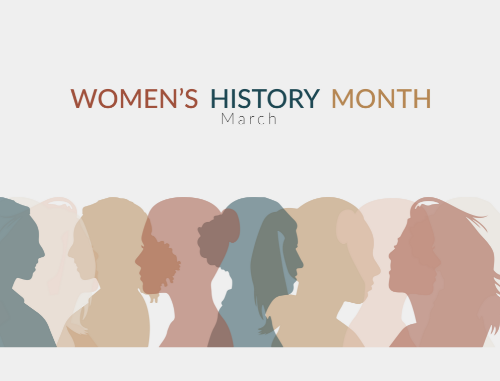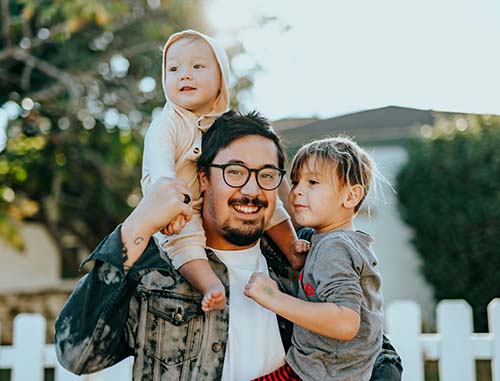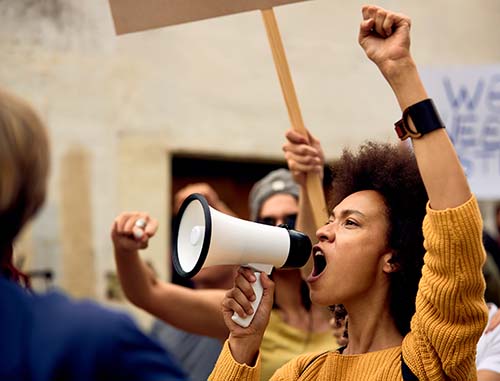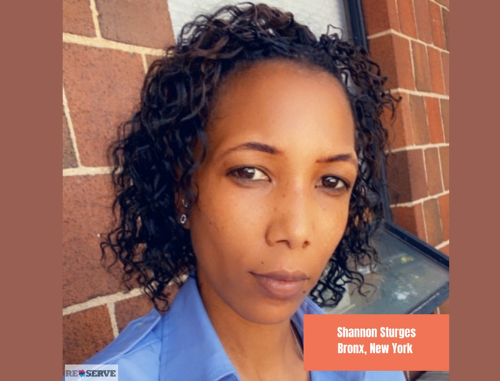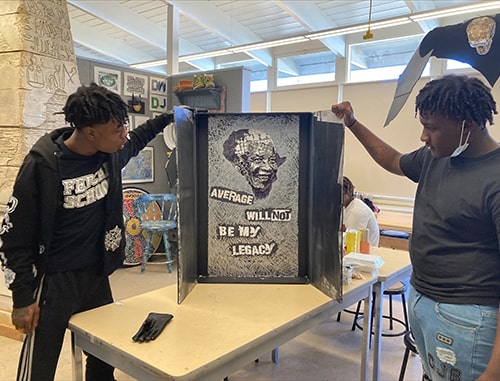Women’s History Month Should Propel Us to Look Forward

March 14, 2022
Women’s History Month highlights the contributions of women to events in history and contemporary society. The actual celebration of Women’s History Month grew out of a weeklong celebration of women’s contributions to culture, history and society organized by the school district of Sonoma, California, in 1978. It is celebrated during March in the United States, the United Kingdom, and Australia, corresponding with International Women’s Day on March 8, and during October in Canada, corresponding with the celebration of Persons Day on October 18.
When President Jimmy Carter established National Women’s History Week in the US in 1980, he said, “From the first settlers who came to our shores, from the first American Indian families who befriended them, men and women have worked together to build this nation. Too often the women were unsung and their contribution went unnoticed. But the achievements, courage, leadership, strength and love of the women who built America was as vital as that of the men whose names we know so well.”
While I applaud President Carter’s action and value the importance of honoring all that what women have contributed to the arc of the world’s history, I think it is equally important to use this month to raise awareness of how far women still have to go to be true equals in society.
Just think, many of our grandmothers were born without the right to vote. And while there have been 12,024 men who have served in the U.S. Congress since the first Congress in 1789, there have been only 397 women. According to a 2017 Pew Research poll, 42% of women face workplace discrimination in the United States. In 2018, the Census Bureau reported that women earned just 82 cents for every dollar made by men in the United States.
Equality between men and women was a core tenet enshrined in the UN Charter in 1945. Yet, 75 years later, women and girls live in a world of widespread gender inequality.
While the past decades have seen important progress for women and girls, change has been uneven and incremental. In parts of Africa, female genital mutilation is still a taking place. In India, seven percent of girls are married by the time they’re 15 years old. Worldwide, 47,000 women and girls were killed by their intimate partners or other family members in 2020. This means that, on average, every 11 minutes, a woman or girl is killed by someone in her own family.
According to Mr. António Guterres, the Secretary-General of the UN, gender equality is the “unfinished business of our time and the greatest human rights challenge in our world.”
A recent UN publication emphasized that “Women and girls represent half of the world’s population and, therefore, also half of its potential. Gender equality, besides being a fundamental human right, is essential to achieve peaceful societies, with full human potential and sustainable development. Moreover, it has been shown that empowering women spurs productivity and economic growth. Unfortunately, there is still a long way to go to achieve full equality of rights and opportunities between men and women, warns UN Women. Therefore, it is of paramount importance to end the multiple forms of gender violence and secure equal access to quality education and health, economic resources, and participation in political life for both women and girls and men and boys. It is also essential to achieve equal opportunities in access to employment and to positions of leadership and decision-making at all levels.”
So as we rightly celebrate the contributions of women to our world, let’s also keep our eye on the future—a world where a little girl born in this world has the same opportunities, same access, same treatment, same encouragement, same expectations for greatness, as the little boy born next to her.
Women’s History Month, Debería Impulsarnos a Mirar Hacia Adelante
14 marzo 2022
Women’s History Month, destaca las contribuciones de las mujeres tanto en los acontecimientos de la historia asi como de la sociedad contemporánea. La celebración real del Women’s History Month, surgió de una celebración que duro una semana a cerca de las contribuciones de las mujeres a la cultura, la historia y la sociedad, organizada por el distrito escolar de Sonoma, California, en 1978. Se celebra durante marzo en los Estados Unidos, el Reino Unido y Australia, correspondiendo con el Día Internacional de la Mujer el 8 de marzo, y durante octubre en Canadá, correspondiendo con la celebración del Persons Day el 18 de octubre.
Cuando el presidente Jimmy Carter estableció la Semana Nacional de la Historia de la Mujer en los Estados Unidos en 1980, dijo: “Desde los primeros colonos que llegaron a nuestras costas, desde las primeras familias indígenas nativas que se hicieron amigas de ellos; hombres y mujeres han trabajado juntos para construir esta nación. Con demasiada frecuencia, las mujeres no eran reconocidas y su contribución pasaba desapercibida. Pero los logros, el coraje, el liderazgo, la fuerza y el amor de las mujeres que construyeron Estados Unidos, fueron tan vitales como los de los hombres cuyos nombres conocemos tan bien.”
Si bien aplaudo la acción del Presidente Carter y valoro la importancia de honrar todo lo que las mujeres han contribuido al curso de la historia del mundo, creo que es igualmente importante usar este mes para crear conciencia sobre lo lejos que aún tienen que ir las mujeres para ser verdaderas iguales en la sociedad.
Solo piensa, muchas de nuestras abuelas nacieron sin derecho al voto. Y mientras que ha habido 12,024 hombres que han servido en el Congreso de los Estados Unidos desde el primer Congreso en 1789, solo ha habido 397 mujeres. Según una encuesta de Pew Research de 2017, el 42% de las mujeres enfrentan discriminación en el lugar de trabajo en los Estados Unidos. En 2018, la Oficina del Censo informó que las mujeres ganaban solo 82 centavos por cada dólar ganado por los hombres en los Estados Unidos.
La igualdad entre hombres y mujeres fue un principio básico consagrado en la Carta Magna de las Naciones Unidas en 1945. Sin embargo, 75 años después, las mujeres y las niñas viven en un mundo de desigualdad de género generalizado. Si bien en las últimas décadas se han visto importantes progresos para las mujeres y las niñas, el cambio ha sido desigual y gradual. En algunas partes de África, la mutilación genital femenina sigue teniendo lugar. En la India, el siete por ciento de las niñas se les casa cuando tienen 15 años. En todo el mundo, 47.000 mujeres y niñas fueron asesinadas por sus parejas íntimas u otros miembros de la familia en 2020. Esto significa que, en promedio, cada 11 minutos, una mujer o niña es asesinada por alguien de su propia familia.
Según el Sr. António Guterres, Secretario General de la ONU, la igualdad de género es la "asignatura pendiente de nuestro tiempo y el mayor desafío en derechos humanos en nuestro mundo.”
Una publicación reciente de la ONU enfatizó que “las mujeres y las niñas representan la mitad de la población mundial y, por lo tanto, también la mitad de su potencial. La igualdad de género, además de ser un derecho humano fundamental, es esencial para lograr sociedades pacíficas, con pleno potencial humano y desarrollo sostenible. Además, se ha demostrado que el empoderamiento de las mujeres estimula la productividad y el crecimiento económico.
Desafortunadamente, todavía queda un largo camino por recorrer para lograr la plena igualdad de derechos y oportunidades entre hombres y mujeres, advierte UN Women. Por lo tanto, es de suma importancia poner fin a las múltiples formas de violencia de género y garantizar la igualdad de acceso a la educación y a la salud de calidad, a los recursos económicos y a la participación en la vida política tanto para las mujeres como para las niñas, así como para los hombres y los niños. También es esencial lograr la igualdad de oportunidades tanto en el acceso al empleo como a puestos de liderazgo y toma de decisiones en todos los niveles. “
Así que mientras celebramos con razón las contribuciones de las mujeres a nuestro mundo, también mantengamos nuestra mirada en el futuro; un mundo donde una niña nacida en este mundo tenga las mismas oportunidades, el mismo acceso, el mismo trato, el mismo aliento, las mismas expectativas de grandeza, como el niño nacido junto a ella.

